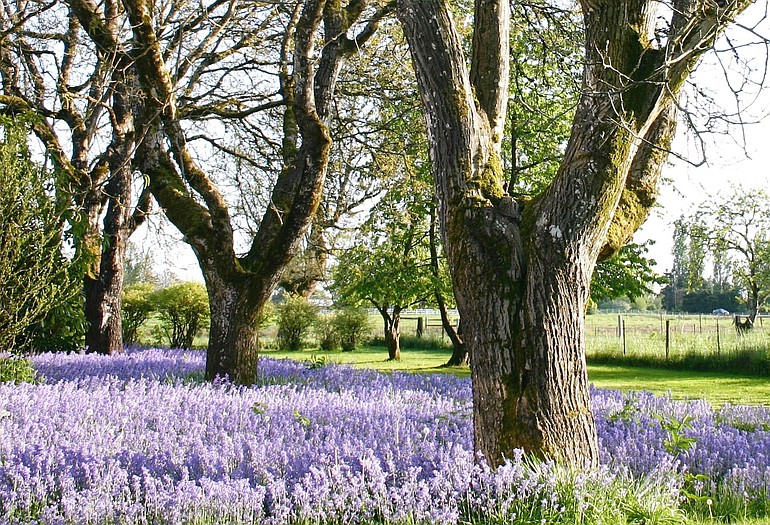The school year is back in session and the rain has returned. I find it exciting to be in transition. For many gardeners, fall is the time of year to think of spring bulbs. Delayed gratification is a part of the garden life. Because of this, autumn seems more like the beginning of something than like the end of it.
When we plant bulbs in the fall, we envision the colorful tulips and the bright daffodils encased within each little brown package. It doesn’t matter if the weather is good or bad on the day we plant spring bulbs. This seasonal garden task will lift your spirits. Although spring is months away, when it does arrive, our efforts pay off tenfold.
Bulbs look best planted in casual clusters. If you are only planting a couple of small groups of bulbs, a bulb planter works fine. Just remember to use enough bulbs to assure that each grouping is no smaller than a large dinner plate. To avoid the stingy look of single, stranded tulips and other bulbs, you are better off using a garden spade instead of a bulb planter.
A spade makes it easier to set bulbs side by side in large groupings. Dig out a wide hole and put all of the bulbs in at one time before refilling and covering with amended soil. Better yet, dig a series of wide, curving trenches and position the bulbs in the bottom. Layer different types of bulbs from bottom to top in the same hole to create companion plantings or a succession of bloom in a given location.
An example of a good combination planting is to dig a 6-inch-deep hole and place several Dutch hyacinths in the bottom. Cover these with a light layer of soil and then plant a handful of grape hyacinths at depth of about 4 inches. The two types of hyacinths will bloom together in spring and the diminutive grape hyacinths will act as a frilly skirt to hide the thick stalks of the scented, Dutch hyacinths.
Choosing a spot
Before you buy your spring bulbs, go outside and take a good look at where in the garden you will be planting. Look for empty spaces where seasonal perennials have died away or places where plants have simply died. After planting your bulbs, mark the spot so that you will remember when spring rolls around. I know the frustration of digging into spring soil and splitting open bulbs I planted last fall.
One of my favorite garden bulbs, the muscari or grape hyacinth, is a charming addition to the garden suitable for sun or shade. These are small, 5- to 8-inch plants, ideal for under-planting. They are hardy and form large colonies that bloom just as the crocus fade. As a bonus, the leaves of the grape hyacinth bulbs appear in autumn and remain all winter. These serve as a marker for the dormant bulbs, so you will not inadvertently plant over them or, worse yet, dig them up.
Consider tulips
The botanical name for tulips, Tulipa, is derived from the Turkish word tulpend or turban, which the flower resembles. Many people think of Holland as the home of the tulip. In fact, tulips were unknown there until about the 16th century. Wild tulips are native to Turkey and western and central Asia, with only a few species occurring in Europe.
Many cultivated varieties were widely grown in Turkey long before they were introduced to European gardens. The botanist Clusius is credited with first growing tulips from seed sent from Turkey. In 1593, he became professor of botany at the University of Leiden and planted tulips in his garden there. They were soon widely distributed throughout Holland and began appearing elsewhere in Europe.
These bulbs became so popular in Holland that “tulip mania” developed early in the 17th century. People began speculating in bulbs of new colors and unusual shapes and paying extravagant prices for them. For one bulb, a seller reportedly received two loads of wheat, four fat oxen, eight fat pigs, 12 fat sheep, two hogsheads of wine, four barrels of beer, two barrels of butter, 1,000 pounds of cheese, a bed, a suit of clothes and a silver beaker.
Fortunately for gardeners today, tulips are relatively inexpensive and easily available. Along with daffodils, they are one of the two most popular spring-flowering bulbs. Many hundreds of tulip cultivars have been developed and are classified according to 15 horticultural divisions. Unless plant collecting is your newest passion and Latin nomenclature is important to you, why not plant and grow the tulips that you think are the most beautiful?
Robb Rosser is a WSU-certified Master Gardener. Reach him at Write2Robb@aol.com.



